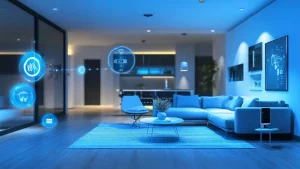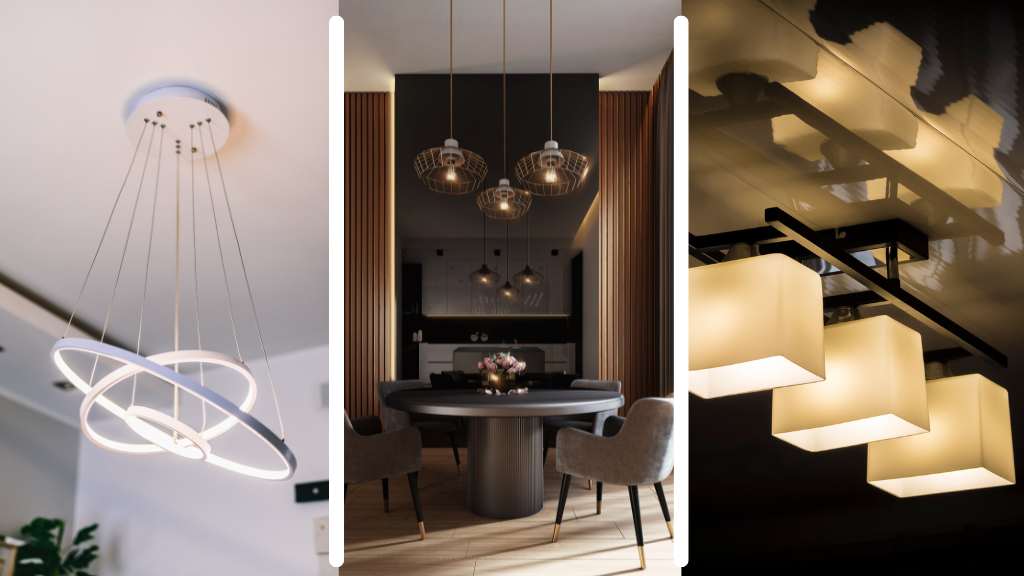
Table of Contents
Lighting is the unsung hero of interior design, capable of transforming a space from dull to dynamic with just the flick of a switch. Understanding the different types of lights available can help you create a harmonious and inviting atmosphere in your home. From illuminating tasks to setting the mood, each type of lighting serves a specific purpose, enhancing both functionality and aesthetics. In this guide, we’ll delve into nine essential types of lights for your home, exploring their unique characteristics and applications. However, before we delve into different types of lights for homes, let’s understand their significance.
Significance of Interior Lights
Interior lighting plays a pivotal role in home decor, offering both functionality and aesthetic appeal. Beyond simply illuminating dark spaces, interior lights create an overall ambiance and atmosphere of a room. Here are some key reasons highlighting the significance of interior lights for home decor:
- Enhanced Visibility: One of the most obvious benefits of interior lighting is its ability to provide visibility in dimly lit areas, making it easier to navigate and perform tasks even in the dark.
- Accentuating Design Elements: Accent lighting, for example, highlights the architectural features of a room, such as faux ceilings, molding, or alcoves. By strategically placing lights along these design elements, you can create a visually stunning effect that adds depth and dimension to the space.
- Ornamental Function: Lighting fixtures themselves can serve as decorative elements, adding style and personality to a room. Whether it’s a statement chandelier, elegant wall sconces, or modern pendant lights, the right lighting choices can enhance the overall aesthetic of your home decor.
- Control and Versatility: With advancements in technology, interior lighting systems can now be easily controlled to adjust brightness, color, and ambiance according to your preferences. This level of control allows for greater flexibility in creating different moods and atmospheres within your home.
- Mood Enhancement: Lighting has a significant impact on our mood and well-being. The right lighting can create a warm and inviting atmosphere, promoting relaxation and reducing stress. Whether it’s soft ambient lighting for a cozy evening or bright task lighting for productivity, choosing the right light can positively influence your mood.
- Customization Options: Decorative lighting systems offer additional customization options, allowing you to position and adjust light fixtures to suit your specific needs and preferences. These versatile lighting solutions provide flexibility in illuminating different areas of your home according to your changing requirements.
- Portability and Flexibility: Portable lights offer the freedom to easily move and reposition lighting fixtures from one space to another, allowing for quick and effortless changes in your home decor. Whether you’re redecorating or simply want to switch up the ambiance, portable lights provide a convenient solution for adding light wherever it’s needed.
A Comprehensive Table of Different Types of Lights
| Type of Indoor Lighting | Description | Pros | Cons |
| Ceiling Lighting | Provides overall brightness to a room, and comes in various styles such as chandeliers and recessed fixtures. | Offers general illumination, and comes in versatile designs. | Limited in creating ambiance, may require professional installation. |
| Task Lighting | Essential for specific activities like reading or cooking, reduces eye strain and enhances productivity, examples include desk lamps and under-cabinet lights. | Focused illumination, improves visibility for tasks. | Can create glare or shadows if not properly positioned, which may increase energy consumption. |
| Ambient Lighting | Offers overall illumination creating a warm and inviting atmosphere, sources include floor lamps and pendant lights. | Sets the mood for a room, and enhances the ambiance. | May not provide sufficient light for detailed tasks, and can be challenging to balance with other lighting types. |
| Accent Lighting | Highlights specific features or focal points, adding depth and visual interest, examples include wall sconces and track lights. | Adds drama and visual interest to a space, and highlights architectural features or artwork. | Requires careful placement for optimal effect, can be expensive to install multiple fixtures. |
| Wall Sconces | Offers both ambient and accent lighting, adds personality and charm, available in various styles and finishes. | Versatile and decorative, saves floor space. | Limited directional control, may require additional wiring during installation. |
| Mood Lighting | Allows customization to create a specific atmosphere, and enhances relaxation or productivity, which can be achieved with dimmable LEDs and decorative lamps. | Enhances ambiance and mood, versatile for various occasions. | May require special bulbs or fixtures, can be costly to implement throughout the home. |
| Architectural Lighting | Focuses on highlighting unique design elements, such as cove lighting and soffit lighting, adding sophistication and elegance. | Enhances architectural features, adds depth to space. | Requires professional installation, may be difficult to retrofit in existing spaces. |
| Landscape Lighting | Illuminates the exterior of the home, enhances curb appeal and creates a welcoming atmosphere, includes garden lights and pathway markers. | Enhances safety and security, adds aesthetic value to outdoor spaces. | Requires maintenance to prevent damage or malfunction, may increase energy costs. |
| Decorative Interior Lighting | Adds personality and style to the space, serves as both functional and aesthetic element, includes chandeliers and pendant lights. | Adds visual interest, serves as a focal point in the room. | Can be expensive, may not provide sufficient illumination for tasks. |
Now, let’s get to different types of lights for homes.
Different Types of Lights for Homes
1. Ceiling Lighting
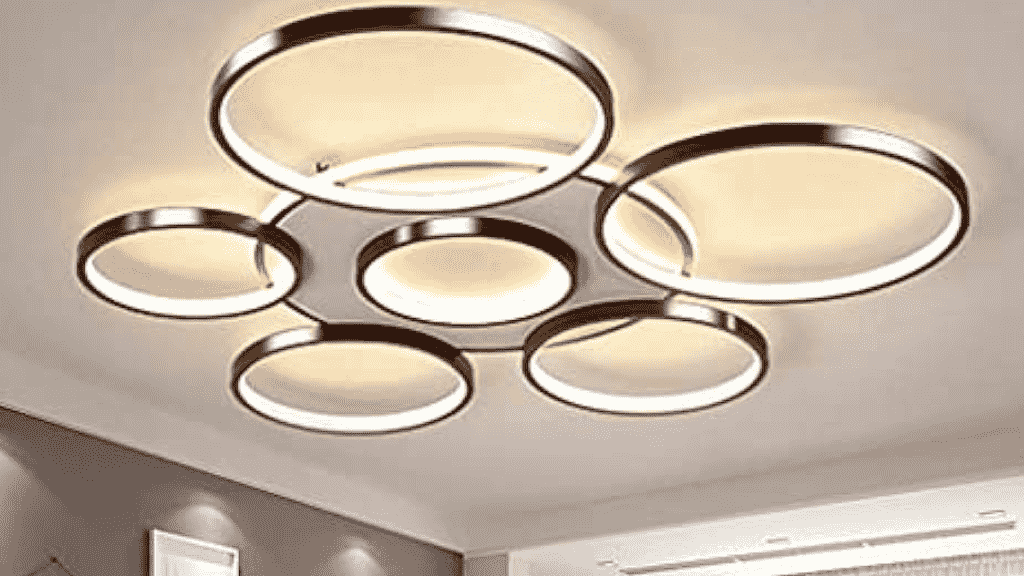
Ceiling lighting serves as the backbone of interior illumination, providing overall brightness to a room. From traditional chandeliers to sleek recessed fixtures, ceiling lighting fixtures come in various styles and designs to complement any decor scheme. Whether you’re lighting up a grand foyer or a cozy bedroom, ceiling lights offer versatile illumination that sets the tone for your space.
2. Task Lighting
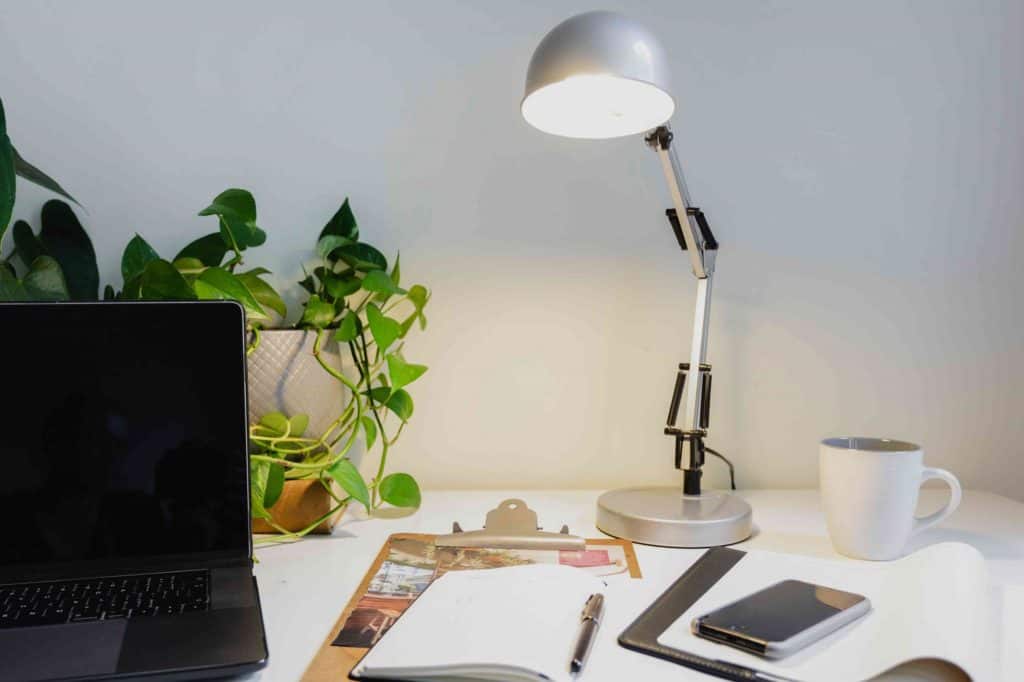
Task lighting is essential for performing specific activities, such as reading, cooking, or working. This focused illumination ensures adequate visibility and reduces eye strain, enhancing productivity and comfort. Desk lamps, under-cabinet lights, and adjustable spotlights are common examples of task lighting fixtures, allowing you to customize the brightness and direction of light to suit your needs.
3. Ambient Lighting
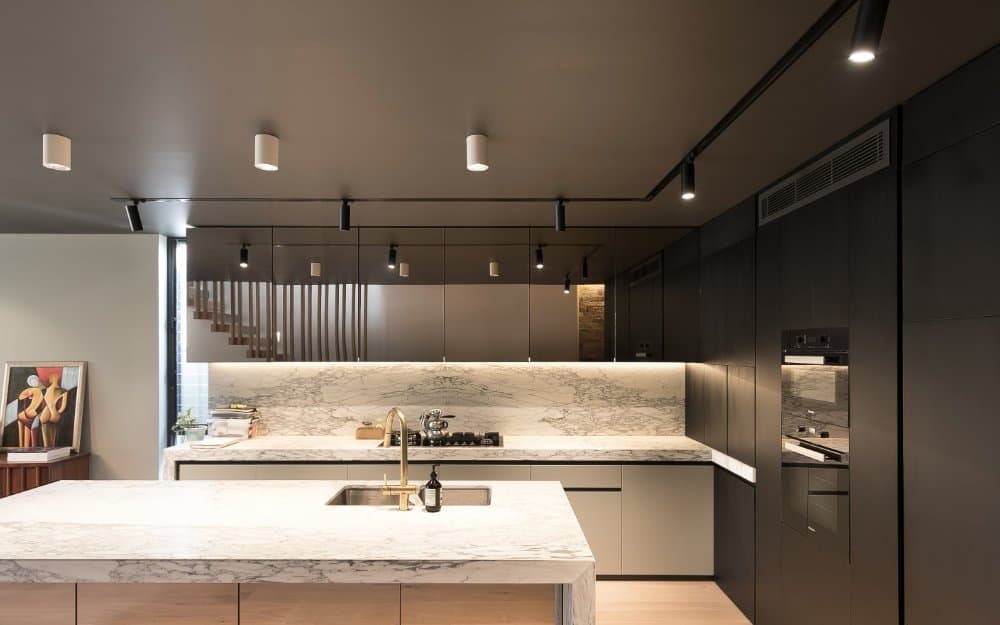
Ambient lighting, also known as general lighting, provides overall illumination to a room, creating a warm and inviting atmosphere. Floor lamps, pendant lights, and track lighting are popular sources of ambient light, offering consistent brightness throughout the space. Whether you’re hosting a dinner party or unwinding with a movie, these types of indoor lighting set the mood and enhance the ambiance of your home.
4. Accent Lighting
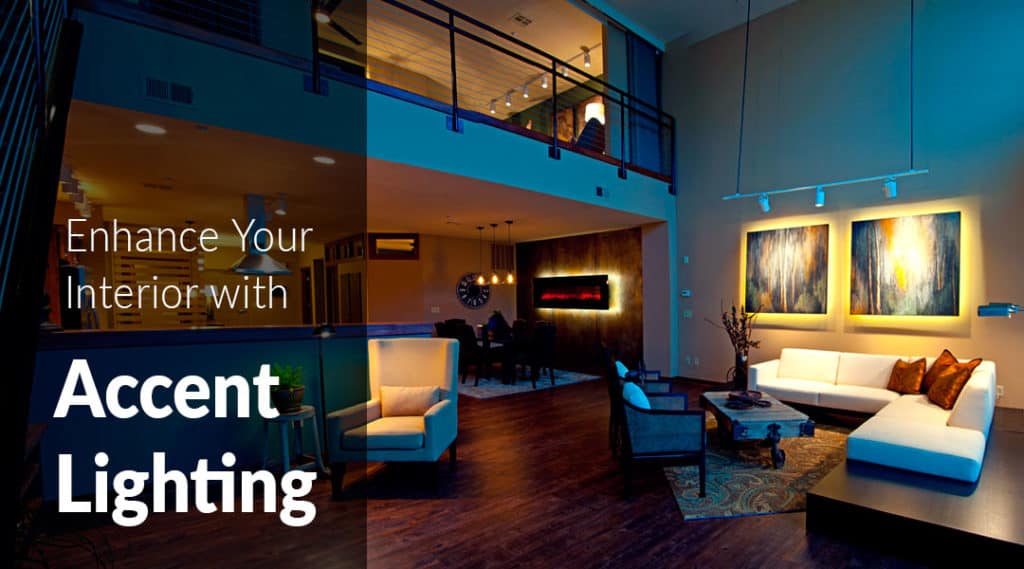
Accent lighting is used to highlight specific features or focal points in a room, adding depth and visual interest to the space. Whether it’s artwork, architectural details, or decorative objects, accent lighting draws attention to these elements, creating a dramatic effect. Wall sconces, track lights, and picture lights are common choices for these types of indoor lighting, allowing you to showcase your favorite pieces and add a touch of elegance to your home.
5. Wall Sconces
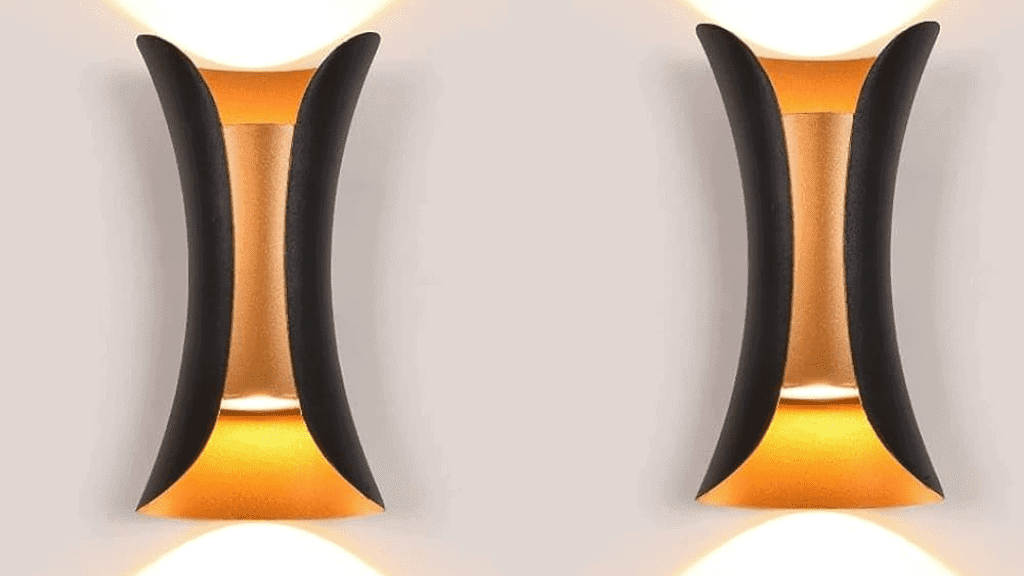
Wall sconces are the types of lights used in interiors. They offer both ambient and accent lighting, brightening dim hallways or emphasizing artistic wall decor. Available in a variety of styles and finishes, from modern glass panels to classic lantern designs, wall sconces add personality and charm to any space. Whether used individually or in pairs, these versatile fixtures create a warm and inviting ambiance that enhances the overall aesthetic of your home.
6. Mood Lighting
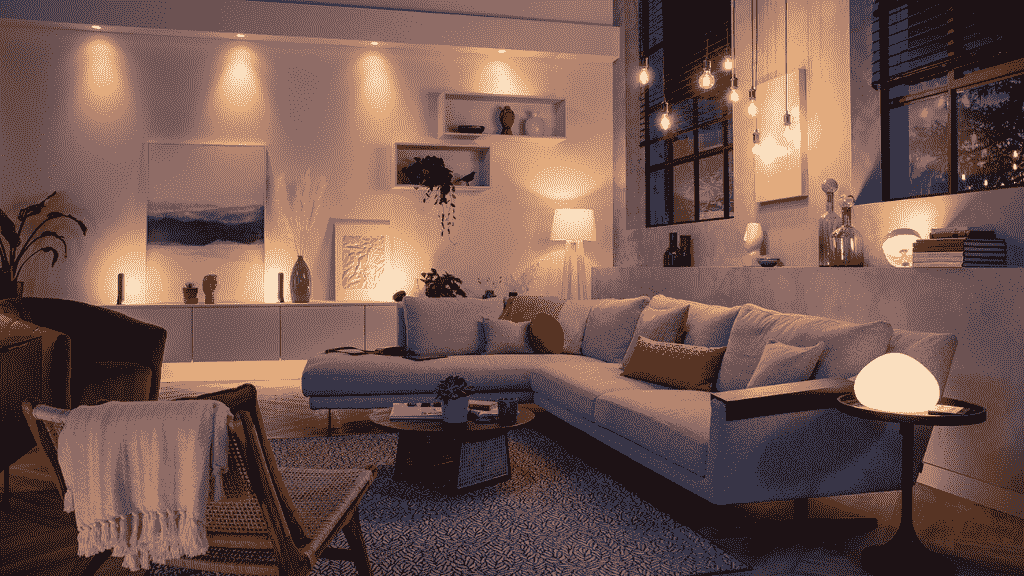
Mood lighting allows you to create a specific atmosphere or mood in your home, enhancing relaxation, romance, or productivity. With dimmable LEDs, color-changing bulbs, and decorative lamps, you can easily adjust the lighting to suit your preferences. Whether you’re hosting a cozy dinner party or enjoying a quiet evening at home, mood lighting sets the tone and creates a welcoming environment for you and your guests.
7. Architectural Lighting
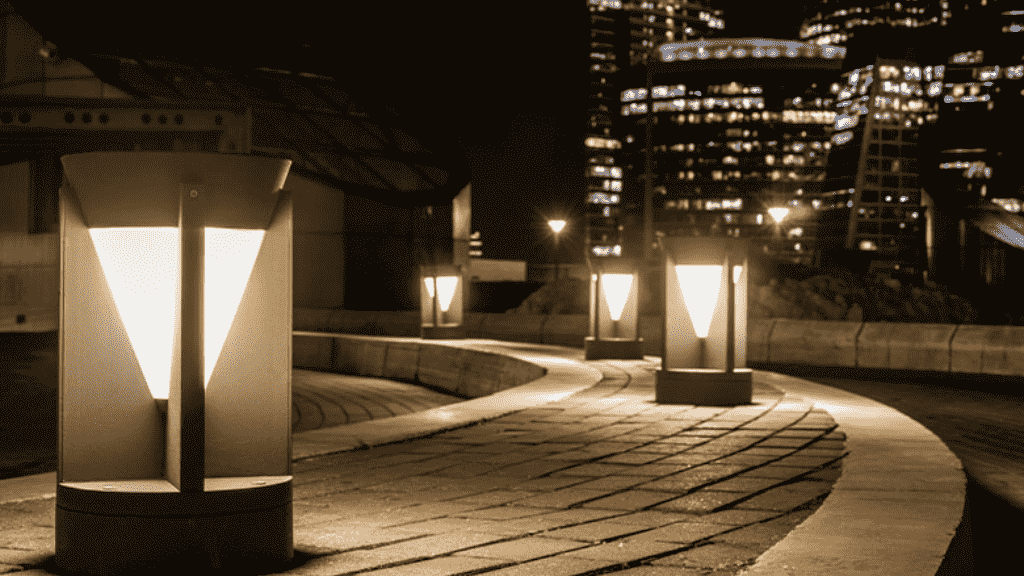
Architectural lighting focuses on highlighting the unique design elements of your home, such as cove lighting, soffit lighting, and cornice lighting. These lighting techniques add depth and dimension to your space, accentuating its architectural features and creating visual interest. Whether used to illuminate a vaulted ceiling or showcase decorative molding, architectural lighting adds a touch of sophistication and elegance to your home.
8. Landscape Lighting

Landscape lighting illuminates the exterior of your home, enhancing its curb appeal and creating a warm and inviting atmosphere. From garden lights to pathway markers, landscape lighting fixtures come in a variety of styles and designs to complement your outdoor space. Whether you’re highlighting a beautiful flower bed or illuminating a winding pathway, landscape lighting adds beauty and charm to your home’s exterior.
9. Decorative Interior Lighting
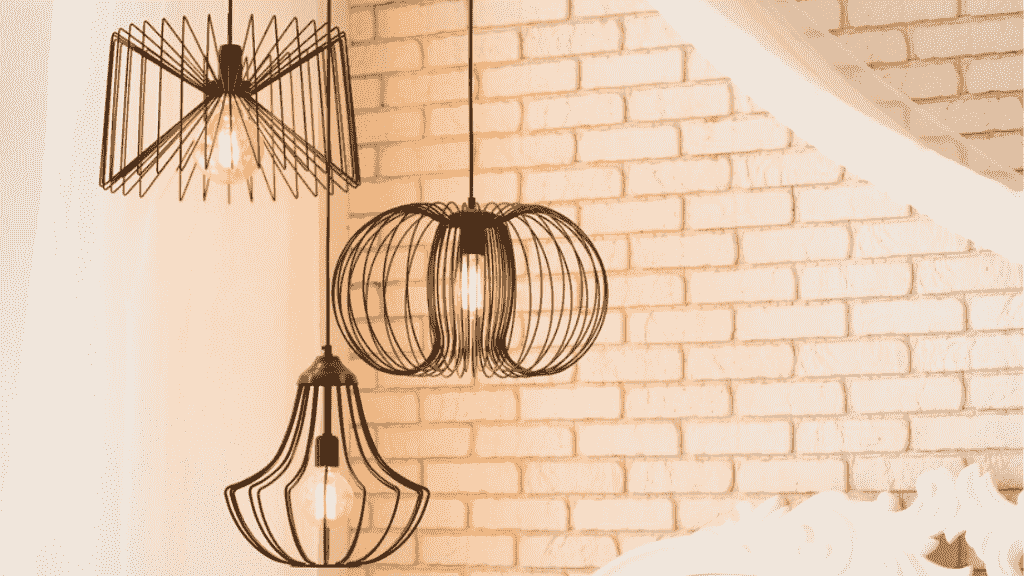
Decorative interior lighting serves as both a functional and aesthetic element in your home, adding personality and style to your space. From elegant chandeliers to whimsical pendant lights, decorative lighting fixtures come in a range of designs to suit every taste and decor theme. Whether used as a focal point in a grand foyer or as an accent piece in a cozy living room, decorative lighting adds beauty and character to your home.
After looking at different types of lights for homes, let’s talk about how to choose them.
How to Choose Types of Lights Used in Interiors
Choosing the right interior lighting for your home is essential to create a comfortable, functional, and aesthetically pleasing environment. Here are some tips to help you select the perfect lighting fixtures for each room:
- Consider the Room’s Function: Think about how each room will be used and what activities will take place there. For example, you’ll need brighter task lighting in the kitchen and home office, while softer ambient lighting may be more suitable for the living room or bedroom.
- Assess Natural Light: Take note of the natural light that enters each room throughout the day. Rooms with ample natural light may require less artificial lighting during the day, while rooms with limited natural light may need additional lighting fixtures to brighten them up.
- Choose the Right Fixture Types: There are various types of lighting fixtures to choose from, including ceiling lights, wall sconces, table lamps, floor lamps, pendant lights, and track lighting. Select fixtures that complement the room’s decor and provide the type of lighting you need.
- Layer Your Lighting: Create depth and dimension in your lighting design by layering different types of lighting. Combine ambient lighting with task lighting and accent lighting to light up the entire room effectively and add visual interest.
- Consider Proportion and Scale: Choose lighting fixtures that are proportionate to the size of the room. A tiny pendant light may not get noticed in a large dining room, while a big chandelier could overwhelm a small foyer.
- Pay Attention to Style and Finish: Select lighting fixtures that go with the overall style and decor of your home. Whether your style is modern, traditional, rustic, or eclectic, there are lighting options available to suit your taste. Additionally, consider the finish of the fixtures and how they will coordinate with other elements in the room, such as furniture and hardware.
- Think About Energy Efficiency: Opt for energy-efficient lighting options, such as LED bulbs, which consume less energy and last longer than traditional incandescent bulbs. Not only will you save money on your energy bills, but you’ll also reduce your carbon footprint.
- Experiment with Controls and Dimmers: Install dimmer switches and controls to increase or decrease the brightness and ambiance of your lighting fixtures according to your preferences and mood. Dimmers allow you to customize the lighting levels for different activities and create a more comfortable and inviting atmosphere.
- Seek Professional Advice if Needed: If you’re unsure about which lighting fixtures to choose or how to design your lighting layout, don’t hesitate to seek advice from a professional interior designer or lighting specialist. They can offer valuable insights and recommendations based on your specific needs and preferences.
Conclusion – Different Types of Lights For Home Interiors
Lighting plays a crucial role in creating a comfortable and inviting atmosphere in your home. By incorporating a combination of ceiling lighting, task lighting, ambient lighting, accent lighting, wall sconces, mood lighting, architectural lighting, landscape lighting, and decorative interior lighting, you can enhance both the functionality and aesthetics of your space. Whether you’re illuminating a cozy reading nook or highlighting a stunning piece of artwork, the right lighting can truly transform your home into a sanctuary of style and comfort.

